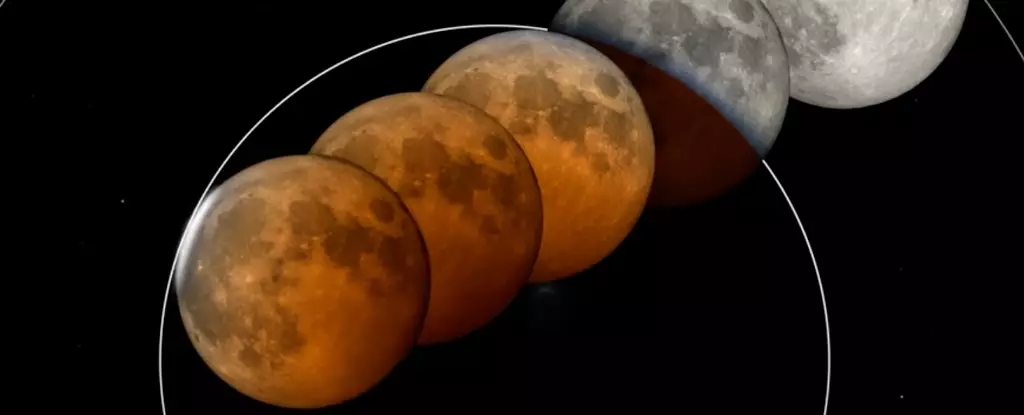A lunar eclipse is not just a cosmic event; it serves as a captivating spectacle that merges science with the beauty of celestial mechanics. When the Earth, moon, and sun align perfectly, the result is a phenomenal display often dubbed the “blood moon.” This awe-inspiring term denotes the reddish hue that engulfs the moon during total eclipses, and it’s the upcoming total lunar eclipse that enthusiasts eagerly await.
But what causes this beautiful transition? As Earth’s shadow blankets the moon, light filtered through Earth’s atmosphere transforms its color. Unlike the majority of sunlight, which scatters in every direction, the red wavelengths manage to weave through the haze of the atmosphere. This phenomenon epitomizes a spectacular natural filter, allowing only the fiery reds to reach the moon’s surface. NASA’s description—likening it to the world’s sunrises and sunsets painting the moon—captures the poetic essence of this spectacle perfectly.
The Celestial Dance: When to Watch
Mark your calendars: the magic happens on the night of March 13 into the early hours of March 14, depending on your time zone. Starting at 1:09 a.m. ET, the moon’s visage will begin to shift, appearing as though it’s losing bites of brightness. This partial eclipse sets the stage for the full grandeur just a few hours later.
The total eclipse reaches its zenith at 2:26 a.m. ET, where the moon will be fully shrouded in Earth’s shadow, decorated in a deep crimson hue that is stunning to behold. For a richer experience, enhancing the view through binoculars or a telescope will reveal the moon’s surface, marking the shadows that represent crater outlines with an ethereal glow.
Practical Tips for Observing the Event
For enthusiasts looking to document this celestial event, preparation is key. NASA suggests using a tripod to stabilize your camera for long exposure shots, allowing you to capture the moon’s unique coloration in great detail. This method highlights the fleeting beauty of the moment, enabling your photographs to transcend mere snapshots into lasting memories.
Within the timeline of the event, totality lasts about an hour before the moon gradually returns to its original state, lighting up again by 6 a.m. If you miss this enchanting spectacle, fret not—skies will again offer lunar delights later in the year with two additional total eclipses set for September and March next year.
The Emotional Connection to Celestial Wonders
Experiencing a lunar eclipse is not merely an exercise in astronomy. It evokes a profound emotional response, as it ties the observer intimately to the universe. With each eclipse, we are reminded of our place in the cosmos—a tiny dot among vast celestial bodies—prompting feelings of wonder and introspection.
In a world increasingly dominated by technology, witnessing such natural phenomena can reignite our appreciation for the magnificence of nature. It urges us to step outside, look up, and revel in the shared experience of wonder that transcends individuality. The blood moon—a potent reminder that beauty and mystery lie in the skies above, waiting to be embraced.

